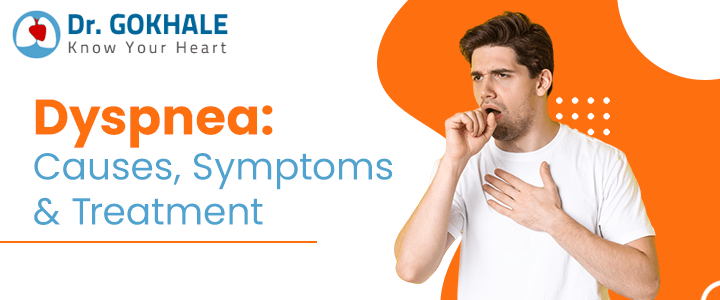Feeling breathless after taking a relaxing walk or while sitting is a worrying sign especially when one hasn’t performed any acts of physical exertion that would lead to such a feeling. It is your body’s way of triggering warning signs that something is wrong or needs attention. This article will explore what dyspnea is, its causes and symptoms, and what you can do about it.
Dyspnea, also known as breathlessness, is not a disease but a common symptom that various factors can cause. Dyspnea is a medical terminology used to describe shortness of breath or difficulty in breathing. It can be a mild, occasional symptom or a severe and chronic condition that affects daily living.
Causes of Dyspnea
Dyspnea can be caused by a variety of factors like respiratory, cardiovascular and neurological conditions, which are further examined below:
- Respiratory Conditions: Chronic obstructive pulmonary disease(COPD), pulmonary embolism and asthma are respiratory conditions that can cause breathlessness.
- Neurological Conditions:Conditions like Parkinson’s disease, spinal cord injury, and multiple sclerosis can cause dyspnea.
- Cardiovascular Conditions:Heart failure, arrhythmia and coronary artery disease are conditions that can cause breathlessness.
Other causes of dyspnea include but are not limited to obesity, anxiety, anaemia, panic attacks, extreme temperatures and many more. You would need the best heart and lung transplant surgeon in Hyderabad, like Dr Gokhale if it progresses to a critical stage.
Symptoms of Dyspnea
The symptoms of dyspnea vary depending on underlying factors and can manifest in various ways such as:
- Shortness of breath:Feeling like you can’t catch your breath or are not getting enough air. This can be characterised by rapid or shallow breathing, especially without physical exertion.
- Wheezing: A high-pitched whistling noise produced when breathing, usually accompanied by shortness of breath.
- Dizziness: Feeling lightheaded, unsteady and disoriented.
- Additional Considerations: Fatigue, tightening of the chest, excessive coughing, sudden chest pain, etc.
How to Treat Dyspnea
Treating dyspnea usually depends on treating the underlying cause, which includes:
- Medications: Use medications to reduce inflammation and improve heart function. Medications like bronchodilators and oxygen therapy can help manage the symptoms.
- Changing your Lifestyle:Quitting bad habits like smoking and excessive eating is a good way to improve lung function and reduce symptoms.
- Pulmonary Rehabilitation: Performing exercises that strengthen the lungs and receiving education and support to manage chronic respiratory conditions.
- Surgery:Surgery may be necessary to treat underlying conditions like lung cancer.
How to Manage Living with Dyspnea
Taking steps to manage signs of dyspnea can improve your quality of life and ensure you don’t have to give up your favourite activities. Use the methods listed below to help you adjust your lifestyle:
- Pacing:Stopping to take regular breaks to rest and catch your breath when working or walking can reduce the occurrence of dyspnea.
- Staying Hydrated:Drinking plenty of water keeps the lungs hydrated and reduces the mucus.
- Avoid Triggers:Avoid triggers like smoke, strong odours or high altitudes that can worsen or trigger the condition.
- Using a fan on the face can ease breathlessness
- Sleep with your head elevated
Conclusion
While dyspnea is a challenging condition, it can be managed. By understanding what causes it, its symptoms and treatment options, you can manage the symptoms and live a normal life. If you are experiencing dyspnea and want to take control of your life, connect with Dr Gokhale today.
 Ask Doctor
Ask Doctor
